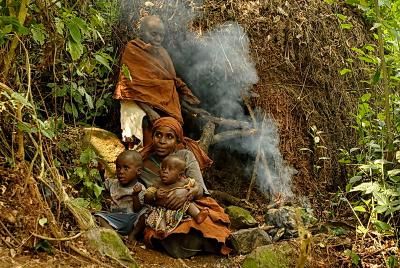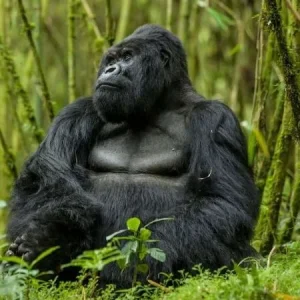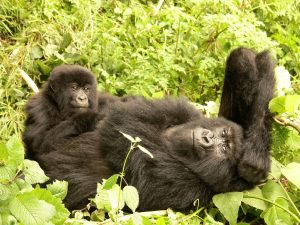Travelers know East Africa for its wildlife safaris, mountain gorillas, and stunning landscapes. Rwanda and Uganda also offer rich cultural experiences that showcase local traditions, history, and daily life. From dance performances to community-based tourism, these destinations let visitors build deep connections with people and heritage. This guide explores 10 unique cultural experiences in Rwanda and Uganda and answers common questions travelers search for when planning an artistic journey.
What are the best cultural experiences in Rwanda and Uganda?
Rwanda and Uganda offer diverse cultural experiences shaped by centuries of tradition, music, art, and community practices. In Rwanda, travelers can explore heritage sites like the King’s Palace, join in Intore dance performances, and visit villages that preserve ancestral lifestyles. In Uganda, cultural encounters include the Batwa forest people, the vibrant Baganda traditions of Kampala, and performances at the Ndere Cultural Centre. Both countries also provide immersive opportunities through homestays, local cuisine, artisan workshops, and cultural festivals. These experiences highlight the deep connection between people, land, and identity in the region.
How can travelers experience traditional Rwandan dance and music?
Traditional Rwandan dance and music are among the country’s most iconic cultural expressions. The Intore dance, often performed at festivals and cultural centers, is a powerful combination of energetic movements, drumming, and colorful costumes. Historically, Intore dancers were warriors chosen by the king to perform in royal courts, symbolizing bravery and strength. Today, travelers can watch these performances at cultural villages, hotels, and national celebrations. The ingoma drummers play a central role, their rhythms echoing Rwanda’s history of unity and resilience. Experiencing such performances offers insight into Rwandan values, storytelling, and artistic heritage.
What is the significance of the King’s Palace Museum in Nyanza?
The King’s Palace Museum in Nyanza is a key cultural attraction in Rwanda. Once the seat of Rwanda’s monarchy, the site has been reconstructed to showcase traditional royal architecture. The palace includes a grass-thatched royal hut, royal cows known as Inyambo, and a modern palace that belonged to King Mutara III Rudahigwa. Visitors can watch the royal cows being tended while listening to songs sung by their herders—a practice deeply symbolic in Rwandan culture. The museum also provides detailed exhibits on Rwanda’s pre-colonial history and monarchy, making it essential for understanding the country’s cultural foundations.
How do visitors learn about Rwanda’s coffee and tea culture?
Rwanda is internationally recognized for its high-quality coffee and tea, and visitors can experience this culture firsthand. Many cooperatives and farms offer guided tours where travelers learn about planting, harvesting, and processing. Coffee tours often end with hands-on sessions where visitors roast and taste freshly brewed coffee. Tea plantations, such as those around Gisakura or Nyungwe, allow travelers to walk through vast green fields and understand the role of tea in Rwanda’s economy. These experiences highlight the importance of agriculture in daily life while providing immersive cultural and culinary insights.
What role do community-based experiences like Iby’iwacu Cultural Village play?
Community-based experiences like the Iby’iwacu Cultural Village near Volcanoes National Park give visitors the opportunity to interact directly with local people. The village showcases traditional Rwandan life through dance, music, storytelling, and demonstrations of hunting, herbal medicine, and pottery. Local guides, many of whom are reformed poachers, share their stories and explain how tourism has transformed their communities. This not only preserves cultural traditions but also provides sustainable livelihoods. Such initiatives play a crucial role in bridging conservation and culture, allowing visitors to leave with a deeper understanding of Rwandan heritage.
What are the highlights of the Batwa cultural experience in southwestern Uganda?
The Batwa people, also known as pygmies, are among the oldest indigenous groups in East Africa. Once forest dwellers in the Bwindi and Mgahinga regions, they lived as hunters and gatherers before being displaced from national parks. Today, Batwa cultural experiences provide travelers with a rare opportunity to learn about their traditions, survival skills, music, and spiritual practices. Visitors can take guided forest walks led by Batwa elders, who demonstrate fire-making, hunting, and medicinal plant use. Performances of dance and storytelling reveal the community’s deep connection with the forest, making this one of Uganda’s most authentic cultural encounters.
How can travelers engage with the Baganda culture in Kampala?
The Baganda people are Uganda’s largest ethnic group, with a rich history and traditions centered around the Buganda Kingdom. In Kampala, travelers can visit the Kabaka’s Palace, the Kasubi Tombs (a UNESCO World Heritage Site), and cultural sites linked to Buganda royalty. Traditional ceremonies, including music and drumming, showcase the Baganda’s pride in their cultural identity. Food experiences, such as tasting matoke (steamed plantains) and luwombo (a traditional dish cooked in banana leaves), provide further immersion. Exploring Baganda culture in Kampala offers insight into how tradition and modernity coexist in Uganda’s capital.
What is the importance of traditional Ugandan music and drumming?
Traditional Ugandan music and drumming are central to the country’s cultural identity. Different ethnic groups have unique instruments, dances, and rhythms. For example, the amakondeere trumpet and engoma drums feature in Buganda ceremonies, while the adungu harp is popular in northern Uganda. Music is not just entertainment; it carries historical, spiritual, and social meanings. Cultural centers, local festivals, and village performances allow visitors to experience the power of Ugandan rhythms. Drumming workshops are also available, giving travelers hands-on opportunities to learn techniques and rhythms passed down through generations.
How do visitors explore Uganda’s craft markets and artisan traditions?
Uganda is known for its vibrant craft markets and artisan traditions, which showcase handmade products that reflect cultural heritage. In cities like Kampala, Jinja, and Entebbe, markets are filled with woven baskets, bark cloth, wood carvings, and beadwork. Bark cloth, made from the fig tree, holds UNESCO recognition as an intangible cultural heritage. Shopping at these markets supports local artisans while offering travelers unique souvenirs. Workshops are available in some areas, allowing visitors to learn basket weaving, pottery, or jewelry-making. This hands-on engagement deepens appreciation for Uganda’s creative traditions.
What is the significance of visiting the Ndere Cultural Centre in Uganda?
The Ndere Cultural Centre in Kampala is one of Uganda’s premier cultural institutions. It showcases traditional music, dance, and storytelling from across the country’s diverse ethnic groups. Visitors can attend evening performances that combine entertainment with education, explaining the history and meaning behind each dance. The center also serves as a cultural hub, preserving traditions while adapting them for modern audiences. For travelers seeking a comprehensive introduction to Ugandan culture in one location, Ndere offers a captivating experience that highlights the country’s diversity and creativity.
Are gorilla and chimpanzee trekking also cultural experiences in Rwanda and Uganda?
While gorilla and chimpanzee trekking are primarily seen as wildlife activities, they also have deep cultural significance. In Rwanda and Uganda, local communities play a vital role in conservation through cultural tourism initiatives. Guides often share legends and traditional beliefs surrounding primates and forests. Visiting nearby villages allows travelers to understand how gorilla tourism has impacted local livelihoods, from craft-making to cultural performances. Thus, primate trekking becomes not only an ecological adventure but also a cultural exchange that connects travelers with indigenous knowledge and traditions.
What cultural festivals can travelers attend in Rwanda and Uganda?
Cultural festivals in Rwanda and Uganda showcase local heritage through vibrant celebrations. In Rwanda, events such as the Kwita Izina Gorilla Naming Ceremony and Umuganura (National Harvest Day) highlight traditions of conservation and agriculture. In Uganda, the Nyege Nyege Festival brings music and culture to the banks of the Nile, while regional festivals spotlight food, dance, and storytelling. These gatherings unite communities and visitors, creating authentic opportunities for cultural immersion. By attending a festival, travelers enjoy lively entertainment while gaining deeper insight into the values and identity of East African societies.
How do homestays in Rwanda and Uganda offer authentic cultural immersion?
Homestays in Rwanda and Uganda give travelers the chance to live with local families and experience daily life firsthand. Guests join their hosts in cooking traditional meals, working on farms, and taking part in household activities. They learn cultural traditions and listen to stories directly from community members. This form of cultural tourism promotes cross-cultural exchange and strengthens local economies by providing families with income. Both rural villages and urban neighborhoods offer homestay options, giving travelers a wide range of perspectives. By choosing a homestay, travelers move beyond sightseeing and build meaningful connections, making it one of the most rewarding cultural experiences in both countries.
Conclusion
Rwanda and Uganda offer far more than wildlife safaris—they are rich in cultural traditions, heritage sites, and community experiences. From Intore dancers and Batwa elders to artisan workshops and homestays, the region’s cultural encounters are as diverse as its landscapes. By exploring these 10 unique cultural experiences, travelers not only witness traditions but also contribute to preserving them for future generations.




